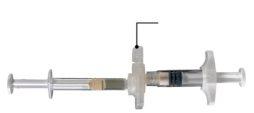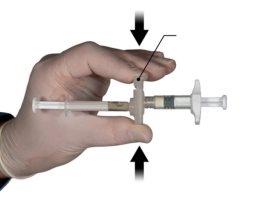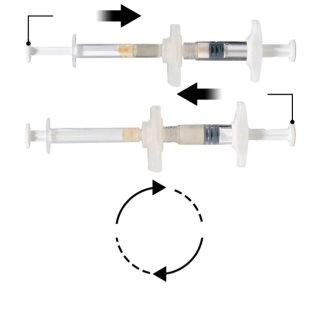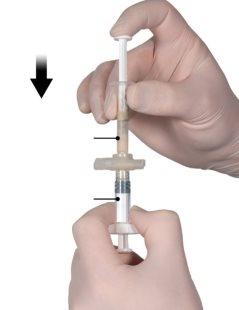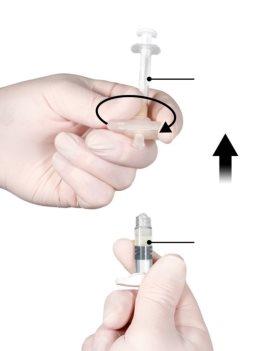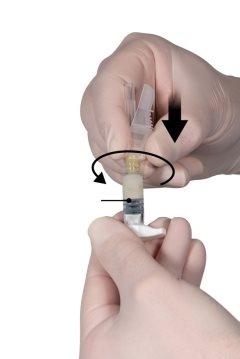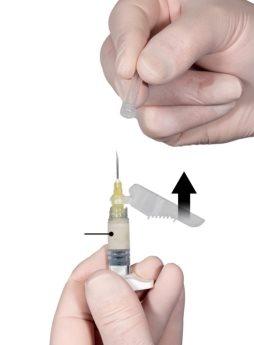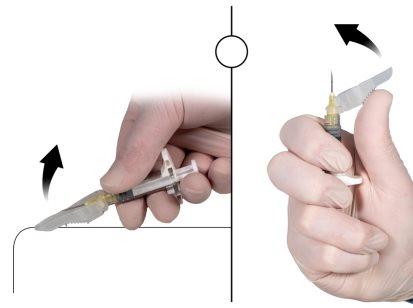
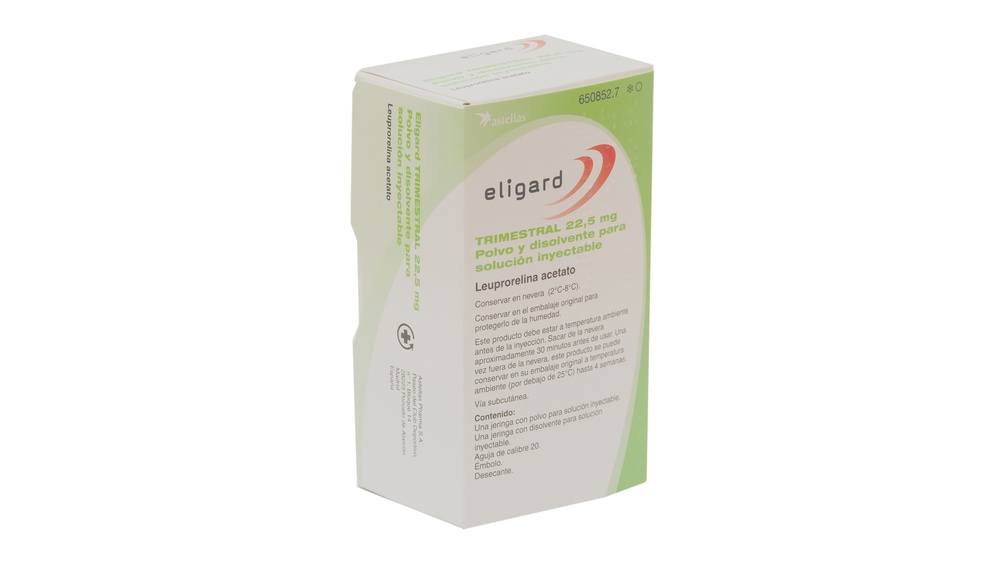
ЕЛІГАРД ТРИМЕСТРАЛЬНИЙ 22,5 мг ПОРОШОК І РОЗЧИННИК ДЛЯ ПРИГОТУВАННЯ ІН'ЄКЦІЙНОГО РОЗЧИНУ

Запитайте лікаря про рецепт на ЕЛІГАРД ТРИМЕСТРАЛЬНИЙ 22,5 мг ПОРОШОК І РОЗЧИННИК ДЛЯ ПРИГОТУВАННЯ ІН'ЄКЦІЙНОГО РОЗЧИНУ

Інструкція із застосування ЕЛІГАРД ТРИМЕСТРАЛЬНИЙ 22,5 мг ПОРОШОК І РОЗЧИННИК ДЛЯ ПРИГОТУВАННЯ ІН'ЄКЦІЙНОГО РОЗЧИНУ
Вступ
Опис: інформація для користувача
Елігард три місяці 22,5 мг
порошок і розчинник для ін'єкційної розчини
Лейпрорелін, ацетат.
Прочитайте уважно весь опис перед тим, як почати використовувати цей лікарський засіб, оскільки він містить важливу інформацію для вас.
|
Зміст опису:
- Що таке Елігард три місяці і для чого він використовується
- Що потрібно знати перед тим, як почати використовувати Елігард три місяці
- Як використовувати Елігард три місяці
- Можливі побічні ефекти
- Збереження Елігарда три місяці
- Зміст упаковки та додаткова інформація
1. Що таке Елігард три місяці і для чого він використовується
Активна речовина Елігарда три місяці належить до групи аналогів гонадотропін-рилизинг гормону. Ці лікарські засоби використовуються для зменшення виробництва певних статевих гормонів (тестостерону).
Елігард три місяці використовується для лікування метастатичного гормонозалежного раку простатиу дорослих чоловіків та для лікування високоризикового неметастатичного гормонозалежного раку простати в поєднанні з радіотерапією.
2. Що потрібно знати перед тим, як почати використовувати Елігард три місяці
Не використовуйте Елігард три місяці
- Якщо ви жінка або дитина.
- Якщо ви гіперчутливий (алергічний)до активної речовини ацетату лейпрореліну, до лікарських засобів з подібною активністю до природного гонадотропін-рилизинг гормону або до будь-яких інших компонентів Елігарда три місяці (перелічених у розділі 6).
- Після хірургічного видалення яєчок, оскільки в цьому випадку Елігард три місяці не призводить до додаткового зниження рівня тестостерону в крові.
- Як єдиний метод лікування, якщо ви відчуваєте симптоми, пов'язані з тиском на спинний мозок або з пухлиною в хребті. У цьому випадку Елігард три місяці можна використовувати тільки в поєднанні з іншими лікарськими засобами для лікування раку простати.
Попередження та обережність
Проконсультуйтеся з вашим лікарем, фармацевтом або медсестрою перед тим, як почати використовувати Елігард три місяці
- Якщо ви страждаєте: будь-якими порушеннями серцевої діяльності або судин, включаючи проблеми з ритмом серця (аритмії), або якщо ви приймаєте лікарські засоби для корекції цих порушень. Ризик проблем з ритмом серця може збільшитися при використанні Елігарда три місяці.
- Якщо у вас є утруднення при сечовипусканні. Ви повинні бути під sátним спостереженням протягом перших тижнів лікування.
- Якщо ви починаєте відчувати тиск на спинний мозок або утруднення при сечовипусканні. Було повідомлено про тяжкі випадки (пов'язані з іншими лікарськими засобами, які мають подібний механізм дії до Елігарда три місяці) тиску на спинний мозок та звуження сечових шляхів, які можуть сприяти появі симптомів, подібних до паралічу. Якщо такі ускладнення виникають, необхідно розпочати стандартне лікування цих випадків.
- Якщо ви відчуваєте, протягом двох тижнів після прийому Елігарда три місяці, раптовий головний біль, нудоту, порушення психічного стану та іноді колапс серцевої діяльності, повідомте про це вашому лікареві або медичній бригаді. Рідко, такі випадки були повідомлені з іншими лікарськими засобами, які мають подібний механізм дії до Елігарда три місяці, і відомі як апоплексія гіпофізу.
- Якщо ви страждаєте цукровим діабетом(високим рівнем глюкози в крові). Ви повинні бути під sátним спостереженням протягом лікування.
- Лікування Елігардом три місяці може збільшити ризик переломів через остеопороз (зниження щільності кісткової тканини).
- Було повідомлено про випадки депресії у пацієнтів, які приймали Елігард три місяці. Якщо ви приймаєте Елігард три місяці і починаєте відчувати депресивний стан, повідомте про це вашому лікареві.
- Було повідомлено про випадки серцево-судинних ускладнень у пацієнтів, які приймали лікарські засоби, подібні до Елігарда три місяці, які, ймовірно, не пов'язані з цими лікарськими засобами. Якщо ви приймаєте Елігард три місяці і починаєте відчувати серцево-судинні симптоми, повідомте про це вашому лікареві.
- Було повідомлено про випадки епілептичних приступів у пацієнтів після прийому Елігарда три місяці. Якщо ви приймаєте Елігард три місяці і починаєте відчувати епілептичні приступи, повідомте про це вашому лікареві.
- Зв'яжіться з вашим лікарем негайно, якщо ви відчуваєте сильний головний біль, порушення зору, звукові ефекти або шум у вухах.
- У вас є жировий гепатоз.
Було повідомлено про тяжкі шкірні реакції, включаючи синдром Стівенса-Джонсона/токсичний епідермальний некроліз (СДТЕН) у поєднанні з лейпрореліном. Припиніть використання лейпрореліну та зверніться за медичною допомогою негайно, якщо ви відчуваєте будь-які симптоми цих тяжких шкірних реакцій, описані в розділі 4.
Ускладнення на початку лікування
Під час першого тижня лікування зазвичай відбувається короткочасне збільшення рівня чоловічого статевого гормону, тестостерону, в крові. Це може привести до тимчасового погіршеннясимптомів, пов'язаних з хворобою, а також до появи нових симптомів, які не спостерігалися раніше. Ці симптоми включають особливо боль у кістках, порушення сечовипускання, тиск на спинний мозок або присутність крові в сечі. Ці симптоми зазвичай проходять після продовжування лікування. Якщо симптоми не проходять, ви повинні звернутися до вашого лікаря.
Якщо ви не відчуваєте покращення при використанні Елігарда три місяці
Частина пацієнтів матиме пухлини, які не чутливі до зниження рівня тестостерону в крові. Якщо ви вважаєте, що дія Елігарда три місяці не така, як очікувалося, повідомте про це вашому лікареві.
Використання Елігарда три місяці з іншими лікарськими засобами
Цей лікарський засіб може взаємодіяти з деякими лікарськими засобами, які використовуються для лікування проблем з ритмом серця (наприклад, хінідин, прокаїнамід, аміодарон і соталол) або може збільшити ризик проблем з ритмом серця при використанні з певними лікарськими засобами (наприклад, метадоном (використовується для зняття болю та як частина детоксикації від наркозалежності), моксифлоксацином (антибіотик), антипсихотичними засобами, які використовуються для лікування тяжких психічних захворювань).
Повідомте вашому лікареві або фармацевту, якщо ви приймаєте або нещодавно приймали інші лікарські засоби, включаючи ті, які можна придбати без рецепта.
Вагітність і лактація
Цей лікарський засіб протипоказаний жінкам.
Водіння транспортних засобів і робота з машинами
Застуда, головокружіння та порушення зору є можливими побічними ефектами лікування Елігардом три місяці або можуть виникнути через хворобу. Якщо ви відчуваєте ці побічні ефекти, будьте обережні при водінні транспортних засобів або роботі з машинами.
3. Як використовувати Елігард три місяці
Доза
Слідуйте точно інструкціям щодо застосування цього лікарського засобу, вказаним вашим лікарем або фармацевтом. У разі сумнівів проконсультуйтеся з вашим лікарем або фармацевтом знову.
Якщо ваш лікар не призначив інакше, цей лікарський засіб вводиться один раз кожні три місяці.
Ін'єкційна розчина утворює депо активної речовини, з якого відбувається поступове вивільнення активної речовини, ацетату лейпрореліну, протягом трьох місяців.
Додаткові тести
Відповідь на лікування цим лікарським засобом повинна бути переглянута вашим лікарем шляхом перевірки певних клінічних показників та визначення рівня простатичного специфічного антигену (ПСА) в крові.
Форма застосування
Цей лікарський засіб повинен бути введений тільки вашим лікаремабо медсестрою. Вони будуть відповідальні за його підготовку.
Після підготовки Елігард три місяці вводиться як підшкірна ін'єкція (введення в тканину під шкірою). Внутрішньоартеріальна (в артерію) або внутрішньовенна (в вену) ін'єкція повинна бути повністю уникнута. Як і з іншими лікарськими засобами, які вводяться підшкірно, місце ін'єкції повинно бути періодично змінено.
Якщо ви отримали більше Елігарда три місяці, ніж потрібно
Оскільки зазвичай ін'єкцію вводить ваш лікар або кваліфікований персонал, не очікується передозування.
Якщо, тим не менш, було введено більшу кількість, ніж передбачено, зверніться до вашого лікаря, щоб він провів спеціальний контроль та призначив додаткове лікування, якщо це необхідно, або зверніться до Токсикологічної служби. Телефон 91 562 04 20.
Якщо ви забули про введення Елігарда три місяці
Поговоріть з вашим лікарем, якщо ви вважаєте, що забули про три місяці введення лікарського засобу.
Ефекти при перерві лікування Елігардом три місяці
Як правило, лікування раку простати цим лікарським засобом є тривалим. Тому лікування не повинно бути перервано, навіть якщо спостерігається покращення симптомів або вони зникають повністю.
Якщо лікування цим лікарським засобом буде перервано достроково, може спостерігатися погіршення симптомів, пов'язаних з хворобою.
Не переривайте лікування достроково без попередньої консультації з вашим лікарем.
Якщо у вас є якісь інші питання щодо використання цього лікарського засобу, зверніться до вашого лікаря, фармацевта або медсестри.
4. Можливі побічні ефекти
Як і всі лікарські засоби, Елігард три місяці може викликати побічні ефекти, хоча не всі люди їх відчувають.
Побічні ефекти, які спостерігалися під час лікування Елігардом три місяці, в основному пов'язані з специфічною дією активної речовини, ацетату лейпрореліну, зокрема збільшенням та зниженням рівня певних гормонів. Найчастішими побічними ефектами є приливи (близько 58% пацієнтів), нудота, загальна слабкість та втома, а також тимчасове місцеве подразнення в місці ін'єкції.
Побічні ефекти на початку лікування
Під час перших тижнів лікування Елігардом три місяці симптоми хвороби можуть тимчасово погіршитися, оскільки на початку спостерігається короткочасне збільшення рівня чоловічого статевого гормону, тестостерону, в крові. Тому ваш лікар може призначити вам відповідний антиандроген (речовину, яка інгібує дію тестостерону) на початковій стадії лікування для зменшення можливих побічних ефектів. (Див. також розділ 2 Перед тим, як використовувати Елігард три місяці, Ускладнення на початку лікування).
Місцеві побічні ефекти
Місцеві побічні ефекти, які спостерігалися після ін'єкції Елігарда три місяці, зазвичай такі, як ті, які часто спостерігаються при підшкірних ін'єкціях подібних препаратів. Легке паління одразу після ін'єкції дуже часте. Кольорові плями та біль після ін'єкції, а також синяки в місці ін'єкції часті. Червоність шкіри в місці ін'єкції спостерігається часто. Затвердіння тканин та виразка рідкі.
Ці місцеві побічні ефекти після підшкірної ін'єкції легкі та мають короткочасний характер. Вони не повторюються між окремими ін'єкціями.
Часті побічні ефекти (можуть спостерігатися у понад 1 з 10 осіб)
- Приливи
- Спонтанні кровотечі на шкірі або слизових оболонках, червоність шкіри
- Втома, побічні ефекти, пов'язані з ін'єкцією (Див. також місцеві побічні ефекти вище)
Побічні ефекти, які спостерігаються часто (можуть спостерігатися у до 1 з 10 осіб)
- Назофарингіт (симптоми простудного захворювання)
- Нудота, загальна слабкість, діарея, запалення шлунка та кишечника (гастроентерит/коліт)
- Свербіння, нічні поти
- Біль у суглобах
- Нерегулярне сечовипускання (також вночі), утруднення при сечовипусканні, біль при сечовипусканні, зменшений об'єм сечі
- Чутливість молочної залози, запалення молочної залози, зменшення розміру яєчок, біль у яєчках, безпліддя, порушення ерекції, зменшення розміру пеніса
- Ригідність (епізоди надмірного тремтіння з високою температурою), слабкість
- Тривале кровотечання, зміни в аналізі крові, зниження рівня червоних кров'яних тілечок/низький рівень червоних кров'яних тілечок
Побічні ефекти, які спостерігаються рідко (можуть спостерігатися у до 1 з 100 осіб)
- Інфекції сечових шляхів, місцеві шкірні інфекції
- Погіршення цукрового діабету
- Аномальні сни, депресія, зниження лібідо
- Головокружіння, головний біль, порушення чутливості шкіри, безсоння, порушення смаку, порушення нюху
- Гіпертонія (збільшення артеріального тиску), гіпотонія (зниження артеріального тиску)
- Недостатність повітря
- Запор, сухість у роті, диспепсія (погана травлення, симптоми переповнення шлунка, біль у шлунку, відрижка, нудота, блювота, відчуття печіння в шлунку), блювота
- Чувство жару, збільшення потовиділення
- Біль у нижній частині спини, м'язові спазми
- Гематурія (присутність крові в сечі)
- Спазми сечового міхура, часте сечовипускання, неможливість сечовипускання
- Збільшення молочної залози у чоловіків, імпотенція
- Летаргія (сонливість), біль, лихоманка
- Збільшення ваги
- Втрата рівноваги, головокружіння
- Втрата м'язової маси/втрата м'язової тканини після тривалого використання
Побічні ефекти, які спостерігаються дуже рідко (можуть спостерігатися у до 1 з 1 000 осіб)
- Аномальні рухи
- Раптова втрата свідомості, обмороки
- Вітрянка, відрижка
- Втрата волосся, шкірний висип
- Біль у грудях
- Виразка в місці ін'єкції
Побічні ефекти, які спостерігаються дуже рідко (можуть спостерігатися у до 1 з 10 000 осіб)
- Некроз в місці ін'єкції
Неідомі (частота не може бути оцінена на основі доступних даних)
- Зміни на електрокардіограмі (продовження інтервалу QT)
- В запалення легенів, захворювання легенів
- Ідіопатична внутрішньочерепна гіпертонія (збільшення внутрішньочерепного тиску навколо мозку, характеризоване головним болем, двоїнням у очах та іншими візуальними симптомами, звуками або шумом у вухах).
- Якщо ви помітили на тулубі круглі або кільцеві червоні плями, часто з пухирцями в центрі, лущенням шкіри, виразками у роті, горлі, носі, геніталіях та очах. Ці тяжкі шкірні реакції можуть бути попереджені лихоманкою та симптомами, подібними до грипу (синдром Стівенса-Джонсона/токсичний епідермальний некроліз).
- Червоність шкіри та висип з свербінням (токсичний шкірний висип).
- Шкірна реакція, яка викликає червоні плями або висип на шкірі, які можуть нагадувати ціль, з червоним центром, оточеним кільцями світлішого червоного кольору (еритема мультиформна).
Інші побічні ефекти
Інші побічні ефекти, опубліковані у зв'язку з лікуванням лейпрореліном, активною речовиною Елігарда три місяці, включають набряк (нагромадження рідини в тканинах, яке виглядає як набухання рук і ніг), легеневу емболію (що викликає симптоми, такі як відчуття нестачі повітря, труднощі з диханням та біль у грудях), серцебиття (сприйняття серцевих ударів), м'язову слабкість, озноб, шкірний висип, втрата пам'яті та порушення зору. Можна очікувати збільшення втрати кісткової тканини (остеопорозу) після тривалого лікування Елігардом три місяці. Через остеопороз ризик переломів збільшується.
Рідко повідомлялося про тяжкі алергічні реакції, які викликають труднощі з диханням або відчуття головокружіння після введення препаратів тієї ж групи, що й Елігард три місяці.
Було повідомлено про епілептичні приступи після введення препаратів тієї ж групи, що й Елігард три місяці.
Звіт про побічні ефекти
Якщо ви відчуваєте будь-які побічні ефекти, зверніться до вашого лікаря, фармацевта або медсестри, навіть якщо це побічні ефекти, які не вказані в цьому описі. Ви також можете повідомити про них безпосередньо через Sistema Español de Farmacovigilancia de Medicamentos de Uso Humano: www.notificaRAM.es. Надсилаючи повідомлення про побічні ефекти, ви можете допомогти надати більше інформації про безпеку цього лікарського засобу.
5. Збереження Елігарда три місяці
Тримайте цей лікарський засіб поза зоною досяжності дітей.
Не використовуйте цей лікарський засіб після закінчення терміну придатності, вказаного на упаковці після CAD. Термін придатності - останній день місяця, який вказано.
Інструкції з зберігання
Зберігайте в холодильнику (між 2°C та 8°C).
Зберігайте в оригінальній упаковці, щоб захистити від вологи.
Цей продукт повинен бути при кімнатній температурі перед ін'єкцією. Виберіть з холодильника приблизно за 30 хвилин до використання. Після видалення з холодильника цей продукт можна зберігати в оригінальній упаковці при кімнатній температурі (нижче 25°C) до 4 тижнів.
Як тільки упаковка була відкрита, продукт повинен бути підготовлений негайно та використаний одразу. Лише для одного використання.
Інструкції з утилізації не використаних або застарілих упаковок Елігарда три місяці
Лікарські засоби не повинні викидатися у водопровідні труби чи сміття. Відкладайте упаковки та лікарські засоби, які вам не потрібні, у пункті збору SIGRE в аптеці. Якщо у вас є сумніви, зверніться до вашого фармацевта, щоб дізнатися, як позбутися упаковок та лікарських засобів, які вам не потрібні. Таким чином, ви допоможете захистити навколишнє середовище.
6. Зміст упаковки та додаткова інформація
Склад Елігарду три місяці
Активна речовина - леупрорелін ацетат.
Предварительно наповнена шприц (шприц Б) містить 22,5 мг леупрорелін ацетату.
Інші компоненти - полі(ДЛ-лактид-ко-гліколієва) кислота (75:25) та Н-метил-2-піролідон у попередньо наповненому шприці з розчином для ін'єкцій (шприц А).
Вигляд Елігарду три місяці та вміст упаковки
Порошок і розчин для ін'єкції.
Випускається в таких упаковках:
- Упаковка типу термоформованої піддонки та стерильної голки калібру 20, вставленої в картонну підтримку. Піддонка містить пакет з десикантом та попередньо підключений шприцевий набір, який складається з:
- шприца А, попередньо наповненого розчином
- шприца Б, попередньо наповненого порошком
з'єднувач з кнопкою для шприців А та Б.
- Багатоштучна упаковка, яка містить 2 комплекти шприцевого набору з попередньо підключеним шприцем.
Можливо, що тільки деякі розміри упаковок будуть випускатися.
Власник дозволу на розміщення продукції на ринку
Recordati Industria Chimica e Farmaceutica S.p.A.
Віа Маттео Чівіталі, 1
20148 Мілан
Італія
Відповідальний за виробництво
Recordati Industria Chimica e Farmaceutica S.p.A.
Віа Маттео Чівіталі, 1
20148 Мілан
Італія
За додатковою інформацією щодо цього лікарського засобу можна звернутися до місцевого представника власника дозволу на розміщення продукції на ринку:
Casen Recordati, S.L.
Автострада Логроньо, км 13,300
50180 Утебо - Сарагоса
Іспанія
Цей лікарський засіб дозволений в державах-членах Європейського економічного простору під наступними назвами:
Австрія: Eligard Depot 22,5 мг
Бельгія: Depo-Eligard 22,5 мг
Кіпр: Eligard
Чехія: Eligard
Данія: Eligard
Естонія: Eligard
Фінляндія: Eligard
Франція: Eligard 22,5 мг
Німеччина: Eligard 22,5 мг
Угорщина: Eligard 22,5 мг
Ісландія: Eligard
Ірландія: Eligard 22,5 мг
Італія: Eligard
Латвія: Eligard 22,5 мг
Литва: Eligard 22,5 мг
Люксембург: Depo-Eligard 22,5 мг
Нідерланди: Eligard 22,5 мг
Норвегія: Eligard
Польща: Eligard 22,5 мг
Португалія: Eligard 22,5 мг
Словаччина: Eligard 22,5 мг
Словенія: Eligard 22,5 мг
Іспанія: Eligard три місяці 22,5 мг
Швеція: Eligard
Дата останнього перегляду цієї інструкції:10/2024
Детальна та оновлена інформація про цей лікарський засіб доступна на сайті Агенції лікарських засобів та медичних продуктів Іспанії (AEMPS) http://www.aemps.es/
Ця інформація призначена лише для медичних працівників:
Перед використанням лікарського засобу витягніть його з холодильника за 30 хвилин до використання, щоб він досяг кімнатної температури.
Спочатку підготуйте пацієнта до ін'єкції, а потім підготуйте лікарський засіб згідно з інструкціями нижче. Якщо лікарський засіб не підготувати за допомогою правильної техніки, його не слід застосовувати, оскільки це може призвести до відсутності клінічної ефективності через неправильну реконструкцію.
Пункт 1
У чистій зоні відкрийте піддонку, видаливши алюмінієву плівку з кута, щоб витягнути вміст. Видаліть пакет з десикантом. Видаліть попередньо підключений шприцевий набір (Фігура 1.1) з піддонки. Відкрийте пакет з голкою безпеки (Фігура 1.2), видаливши паперовий кляп . Примітка:шприци А та Б не повинні бути вирівняні ще.
Фігура 1.1 Вміст піддонки: попередньо підключений шприцевий набір | Фігура 1.2 Під піддонкою: голка безпеки та захисний ковпачок |
|
|
Пункт 2
Утримуйте кнопковий з'єднувач з вказівним та великим пальцями та натисніть (Фігура 2) до тих пір, поки не почуєте клацання. Обидві шприци будуть вирівняні. Не потрібно жодної особливої орієнтації шприцевого набору для активації з'єднування. Не згинайте шприцевий набір (будь ласка, зверніть увагу, що частина лікарського засобу може вийти, якщо шприци частково відвинчуються).
Фігура 2 |
|
Пункт 3
Утримуйте шприци в горизонтальному положенні, перекачайте ліквор з шприца А до порошку леупрорелін ацетату в шприці Б. Перемішайте добро лікарський засіб протягом 60 циклів, натискаючи м'яко вміст обох шприців вперед та назад між шприцями (один цикл - це натискання поршня для шприца А та натискання поршня для шприца Б) в горизонтальному положенні, щоб отримати однорідний та в'язкий розчин (Фігура 3). Не згинайте шприцевий набір (будь ласка, зверніть увагу, що частина лікарського засобу може вийти, якщо шприци частково відвинчуються).
Фігура 3 |
|
Коли лікарський засіб буде ретельно перемішаний, в'язкий розчин матиме колір від безбарвного до білого-жовтого (що може включати відтінки від білого до жовто-білого).
Важливо: після перемішування продовжуйте наступний пункт негайно, оскільки в'язкість лікарського засобу збільшується з часом. Не охолоджуйте лікарський засіб після реконструкції.
Будь ласка, зверніть увагу: Лікарський засіб повинен бути перемішаний, як описано; перемішування не дасть належної суміші.
Пункт 4
Після перемішування утримуйте шприци вертикально з шприцем Б внизу. Шприци повинні залишатися добре підключеними. Перекачайте весь вміст до шприца Б (широкий, короткий шприц), натискаючи поршень шприца А та легенько відтягуючи поршень шприца Б (Фігура 4).
Фігура 4 |
|
Пункт 5
Тримаючи поршень шприца А повністю натиснутим вниз, утримуйте з'єднувач та відвинчуйте його від шприца Б. Шприц А залишиться підключеним до з'єднування (Фігура 5). Зверніть увагу, щоб не вийшло вмісту, оскільки якщо так, голка не буде правильно встановлена, коли шприц буде підключено.
Будь ласка, зверніть увагу: Під час підготовки може залишитися велика бульбашка повітря або кілька малих - це прийнятно. Будь ласка, не видаляйте бульбашки повітря з шприца Б на цьому етапі, оскільки це призведе до втрати лікарського засобу!
Фігура 5 |
|
Пункт 6
- Утримуйте шприц Б у вертикальному положенні та тримайте поршень білого кольору назад, щоб не вийшло лікарського засобу.
- Закріпіть голку безпеки до шприца Б, утримуючи шприц Б та обертаючи голку за годинниковою стрілкою приблизно на три чверті обертання, поки голка не буде закріплена (Фігура 6).
Не надто тісно, оскільки це може призвести до тріщини конуса голки та виходу лікарського засобу під час ін'єкції. Захисний ковпачок також може бути пошкоджений, якщо голка буде надто тісно закручена.
Не слід використовувати лікарський засіб, якщо конус голки трісне, пошкоджується або вийде вміст. Пошкоджена голка не повинна бути замінена, а лікарський засіб не повинен бути введений. Всі елементи пристрою для введення лікарського засобу повинні бути видалені безпечно.
Якщо конус голки пошкоджується, лікарський засіб повинен бути замінений на новий.
Фігура 6 |
|
Пункт 7
Негайно перед введенням лікарського засобу віддаліть захисний ковпачок від голки та видаліть захисний ковпачок (Фігура 7).
Важливо: Не маніпулюйте механізмом голки безпеки перед введенням. Якщо голка здається пошкодженою або має витік, продукт не повинен бути використаний. Пошкоджена голка не повинна бути замінена, а лікарський засіб не повинен бути введений. У разі пошкодження голки використовуйте інший комплект Елігарду.
Фігура 7 |
|
Пункт 8
Перед введенням лікарського засобу видаліть будь-які великі бульбашки повітря з шприца Б. Введіть лікарський засіб підшкірно, утримуючи захисний ковпачок від голки.
Процедура введення:
- Виберіть місце ін'єкції на животі, верхній частині сідниць або в іншому місці з достатньою кількістю підшкірної тканини, яка не має надмірного пігменту, вузлів, ушкоджень або волосся та не була недавно використана.
- Очистіть місце ін'єкції за допомогою ватної палички з алкоголем (не входить до складу).
- Використовуючи великий та вказівний пальці, стисніть та зіберіть шкіру навколо місця ін'єкції.
- Використовуючи свою домінуючу руку, вставте голку швидко під кутом 90 градусів щодо поверхні шкіри. Глибина проникнення залежатиме від кількості та ширини підшкірної тканини та довжини голки. Після вставлення голки звільніть шкіру.
- Введіть лікарський засіб, повільно та рівномірно натискаючи поршень, поки шприц не буде порожнім. Зверніть увагу, щоб ввести всю кількість лікарського засобу з шприца Б, перш ніж вийняти голку.
- Вийміть голку швидко під тим же кутом 90 градусів, який був використаний для вставлення, утримуючи натиск на поршень.
Фігура 8
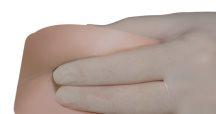
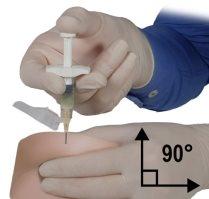
Пункт 9
Після ін'єкції заблокуйте механізм безпеки, використовуючи будь-який з методів активації, згаданих нижче.
- Закриття на плоскій поверхні
Натисніть захисний ковпачок з ковзанням вниз, проти плоскої поверхні (Фігура 9а), щоб закрити голку та заблокувати ковпачок.
Перевірте положення блокування за допомогою чутного та тактильного клацання. Положення блокування повністю покриє наконечник голки.
- Закриття пальцем
Помістіть свій палець на захисний ковпачок (Фігура 9б), закрийте наконечник голки та заблокуйте ковпачок.
Перевірте положення блокування за допомогою чутного та тактильного клацання. Положення блокування повністю покриє наконечник голки.
Фігура 9а Закриття на плоскій поверхні | Фігура 9б Закриття пальцем |
|
Після блокування захисного ковпачка негайно видаліть голку та шприц у спеціальний контейнер для гострих предметів.

Скільки коштує ЕЛІГАРД ТРИМЕСТРАЛЬНИЙ 22,5 мг ПОРОШОК І РОЗЧИННИК ДЛЯ ПРИГОТУВАННЯ ІН'ЄКЦІЙНОГО РОЗЧИНУ в Іспанії у 2025 році?
ЕЛІГАРД ТРИМЕСТРАЛЬНИЙ 22,5 мг ПОРОШОК І РОЗЧИННИК ДЛЯ ПРИГОТУВАННЯ ІН'ЄКЦІЙНОГО РОЗЧИНУ коштує в середньому 301.02 євро у листопад, 2025 році. Ціна може змінюватися залежно від регіону, аптеки та наявності рецепта. Рекомендуємо перевіряти актуальну вартість у місцевих аптеках або через онлайн-сервіси.
- Країна реєстрації
- Середня ціна в аптеках301.02 EUR
- Діючі речовини
- Потрібен рецептТак
- Виробник
- Інформація є довідковою і не є медичною порадою. Перед прийомом будь-яких препаратів обов'язково проконсультуйтеся з лікарем. Oladoctor не несе відповідальності за медичні рішення, прийняті на основі цього контенту.
- Альтернативи до ЕЛІГАРД ТРИМЕСТРАЛЬНИЙ 22,5 мг ПОРОШОК І РОЗЧИННИК ДЛЯ ПРИГОТУВАННЯ ІН'ЄКЦІЙНОГО РОЗЧИНУФорма випуску: РОЗЧИН ДЛЯ ІН'ЄКЦІЙ, 42 мгДіючі речовини: leuprorelinВиробник: Accord Healthcare S.L.U.Потрібен рецептФорма випуску: РОЗЧИН ДЛЯ ІН'ЄКЦІЙ, 45 мгДіючі речовини: leuprorelinПотрібен рецептФорма випуску: ІМПЛАНТ, 5 мгДіючі речовини: leuprorelinВиробник: Sandoz Farmaceutica S.A.Потрібен рецепт
Аналоги ЕЛІГАРД ТРИМЕСТРАЛЬНИЙ 22,5 мг ПОРОШОК І РОЗЧИННИК ДЛЯ ПРИГОТУВАННЯ ІН'ЄКЦІЙНОГО РОЗЧИНУ в інших країнах
Найкращі аналоги з тією самою діючою речовиною та терапевтичним ефектом.
Аналог ЕЛІГАРД ТРИМЕСТРАЛЬНИЙ 22,5 мг ПОРОШОК І РОЗЧИННИК ДЛЯ ПРИГОТУВАННЯ ІН'ЄКЦІЙНОГО РОЗЧИНУ у Польща
Аналог ЕЛІГАРД ТРИМЕСТРАЛЬНИЙ 22,5 мг ПОРОШОК І РОЗЧИННИК ДЛЯ ПРИГОТУВАННЯ ІН'ЄКЦІЙНОГО РОЗЧИНУ у Україна
Лікарі онлайн щодо ЕЛІГАРД ТРИМЕСТРАЛЬНИЙ 22,5 мг ПОРОШОК І РОЗЧИННИК ДЛЯ ПРИГОТУВАННЯ ІН'ЄКЦІЙНОГО РОЗЧИНУ
Консультація щодо дозування, побічних ефектів, взаємодій, протипоказань та поновлення рецепта на ЕЛІГАРД ТРИМЕСТРАЛЬНИЙ 22,5 мг ПОРОШОК І РОЗЧИННИК ДЛЯ ПРИГОТУВАННЯ ІН'ЄКЦІЙНОГО РОЗЧИНУ – за рішенням лікаря та згідно з місцевими правилами.





